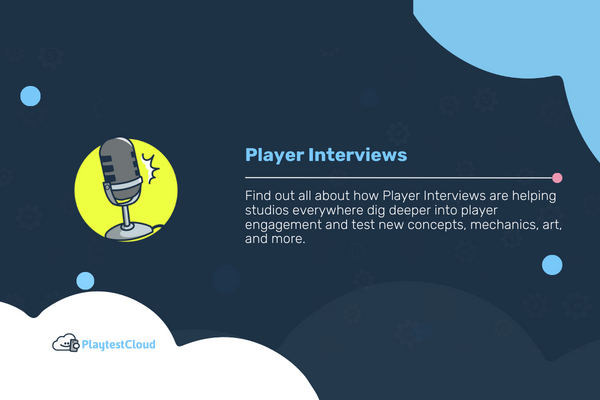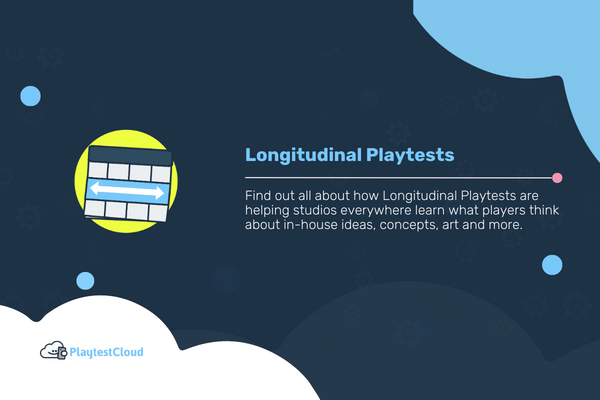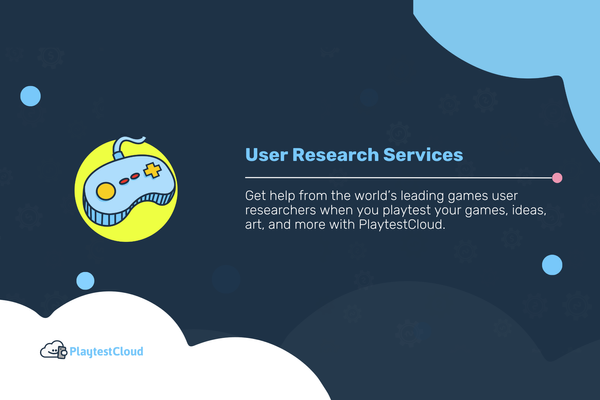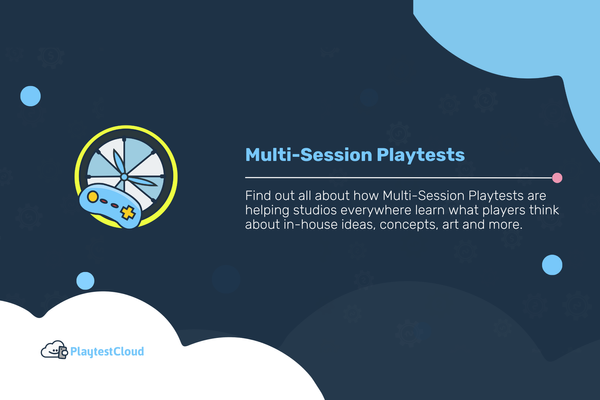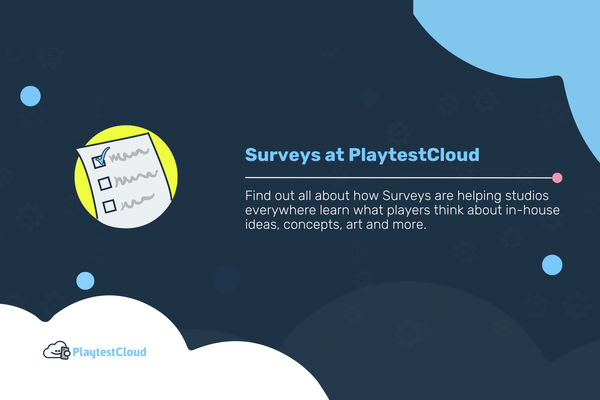What is a Single-Session Playtest | Mobile Game Playtesting
PlaytestCloud was created to give mobile game studios access to real players, enabling them to effectively playtest their games with outside players in a natural environment – often from the comfort of their very own homes instead of a lab setting or office. Now, because of this, we have seen many studios reduce churn and drop-out rates… all while improving first-time user experience (FTUE) and player enjoyment. In the end, our mission is simple: to help studios make games players love by letting the players themselves tell and show them what they love, and what they don’t.
So how did we get this far down the road, to the point where we now serve 60% of the game studios behind the top 100 grossing games on the US App Store?
Well, it all started with the Single-Session playtest. This service is our super-star playtest type – it’s the bread and butter of our offerings, and makes up a huge percentage of the playtest orders we get on a day-to-day basis. That’s because for many mobile game studios just starting out, a Single-Session playtest is the beginning of their playtesting journey. It’s pretty much the first time they’ll get true feedback and insights from players outside of their studio cohort, and helps build a gateway to our other playtesting services later down the line.
But before we get into that, it’s important to answer: What is a Single-Session playtest, exactly?
In the context of mobile game playtesting, a Single-Session playtest is a playtest that allows players to interact with your game or prototype during a single interval of 5 to 60 minutes of gameplay. It doesn’t just embody a set of tools designed specifically to understand and report back about what players really think about the first experience with your game – it also reveals how players actually behave so you can keep building games your target players will love.
That makes these playtests great for when you’re looking to make quick game decisions based on actual player behavior; particularly when it comes to player drop-off, player churn, and tutorial building. Not only can you use them at any stage of development, from early mock-up to the polished production version, but they are especially catered to studios in the prototype stage since they don’t require you to have a ton of content developed before testing. That makes Single-Session playtests the perfect way to test your game as you create it.
Running a Single-Session Playtest
One of the best things about Single-session playtests is that you get to choose the minimum time players should play in 1 session. This means these tests are super flexible, uncomplicated to order, and can be applied to every type of game, at every stage of development. They have already helped studios like yours to:
- Optimize core game loops
- Develop and iterate key mechanics
- Discover why players drop-out in their first session
- Keep game developments fun and engaging
…which is why we consider Single-Session playtests our most popular service! Indeed their simplicity is part of the reason we recommend these playtests off the bat, since you can complete them in 6 simple steps. All you have to do is:
- Choose your target audience. Our online platform gives you direct access to 1.000.000+ players across all genres and demographics.
- Choose your test setup. Decide how you want to build your test from the parameters given (such as the minimum playtime for players of between 5 and 60 minutes), and submit your order through PlaytestCloud. You can also specify step-by-step instructions for players to guide them through unfinished products.
- Upload your iOS or Android build. Provide us access to your game, mock-ups, or prototype, so we can create the playtest environment for you, and find your players.
- Deliver playtest hyperlink to players in your target audience. You will send selected players a hyperlink to their playtest, or you can link them to a prototyping tool we already support.
- Receive gameplay recordings. Players will complete their playtests on their own time, and will submit recordings and post-session survey results within 48H. These include visuals and audio of the players’ screens, their touches, and their thoughts as they ‘think aloud’ through game play.
- Review gameplay ‘reaction material’. When you have your results, you can annotate videos, create reels, hashtags, and transcripts to relay playtest findings directly to members of your game studio team, ensuring you can implement the learnings from your playtest as quickly as possible.
And by the way, don’t worry if you’re thinking your game is too “out of the box” for testing, or if you think what you'd like feedback on is too specific. If you can dream it, we can test it.
Want to start a Single-session Playtest right away? Just sign-up now, or head here if you already have a PlaytestCloud account. Want to know more about Single-session Playtests, including specific use cases of how it’s helped our clients? Then just keep reading below.

The Benefits of Using PlaytestCloud for Single-Session Playtests
As you continue (or start!) your mobile game’s playtesting journey, you might be asking:
What playtest type is best for where my game is at right now? And why should I use PlaytestCloud?
The main benefit of Single-Session Playtests is that they hone in on whether players understand and enjoy your game in their first gameplay session, or if they need more guidance. This is super important since – and most game developers agree – the first hour of a player’s experience is incredibly telling of whether a player actually enjoys your game. Single-Session playtests can even signal what it is that will hook players so they keep playing your game. They’ll tell you how likely it is they would recommend your game to others, and are your best resource to help you find and compare different target audiences!
Because these tests deliver playtest results within 48 hours, they can also help you avoid the pitfalls of making too big a decision on little-to-no player feedback. No one wants to get deep into the development of a new tutorial, for example, only to realize later that players aren’t retaining what they learn. Other advantages include:
- The ability to pick a minimum play time. Players can play as long as they want, but you can select the minimum playtime for which players must play your game during the playtest.
- Game-optimized technology. Our video recording technology is optimized for games and has minimal performance impact. This allows you to provide a natural unguided play experience for playtesters.
- Overnight delivery. Although we say 48 hours for results delivery, about 90% of our Single-Session playtests finish within 12 to 16 hours, meaning you can get your playtest results by next morning’s coffee.
- Quality guarantee. Before you get the results, we review videos and submissions for technical issues so that you get a seamless playtest experience… plus we offer a 100% money-back guarantee!
It’s worth mentioning here that Single-Session Playtests can be built using mock-ups such as Figma, Invision, proto.io, or Marvel prototypes. As with every playtest run with PlaytestCloud, we will also send you videos, surveys, and detailed player profiles after the test. This way you get the full picture of how players behave and feel and, most importantly, can understand why they play how they play.
Because we take care of technical player logistics like NDAs and player rewards, you also have more time overall to review and implement the near-instant results of each playtest you order. Plus, we allow you to do all of your playtesting completely remotely – from wherever your studio hub is situated.
Best of all, thanks to our recent Player Retargeting feature, you can even invite players from old Single-session playtests to test iterative concepts and ideas with players who have played your game or prototype during past playtesting sessions.
In other words, Single-Session Playtests eliminate any doubt about how players come to your game without any instructions–as if they just downloaded your game from the App Store.

The Different Use Cases for Single-Session Playtests
How can Single-session Playtests really help your game? What problems can they solve? What questions can they answer?
More importantly, what different setups can you achieve with a Single-session playtest? Indeed, when setting up your playtest, you might be wondering how to write effective questions or targets for players, or what you can actually do within the parameters of this playtest type.
To help answer your questions, let’s go into even more depth on this topic. Below we give you 6 examples of how our clients have recently used Single-Session Playtests. That way you can experience first-hand the problems this service can solve, and the different setups our clients have used for their own Single-session orders.
When you’re finished reading, we recommend you also check out an in-depth Single-Session case study from the incredible studio in charge of the ‘Om Nom: Run’ game, Zeptolab.
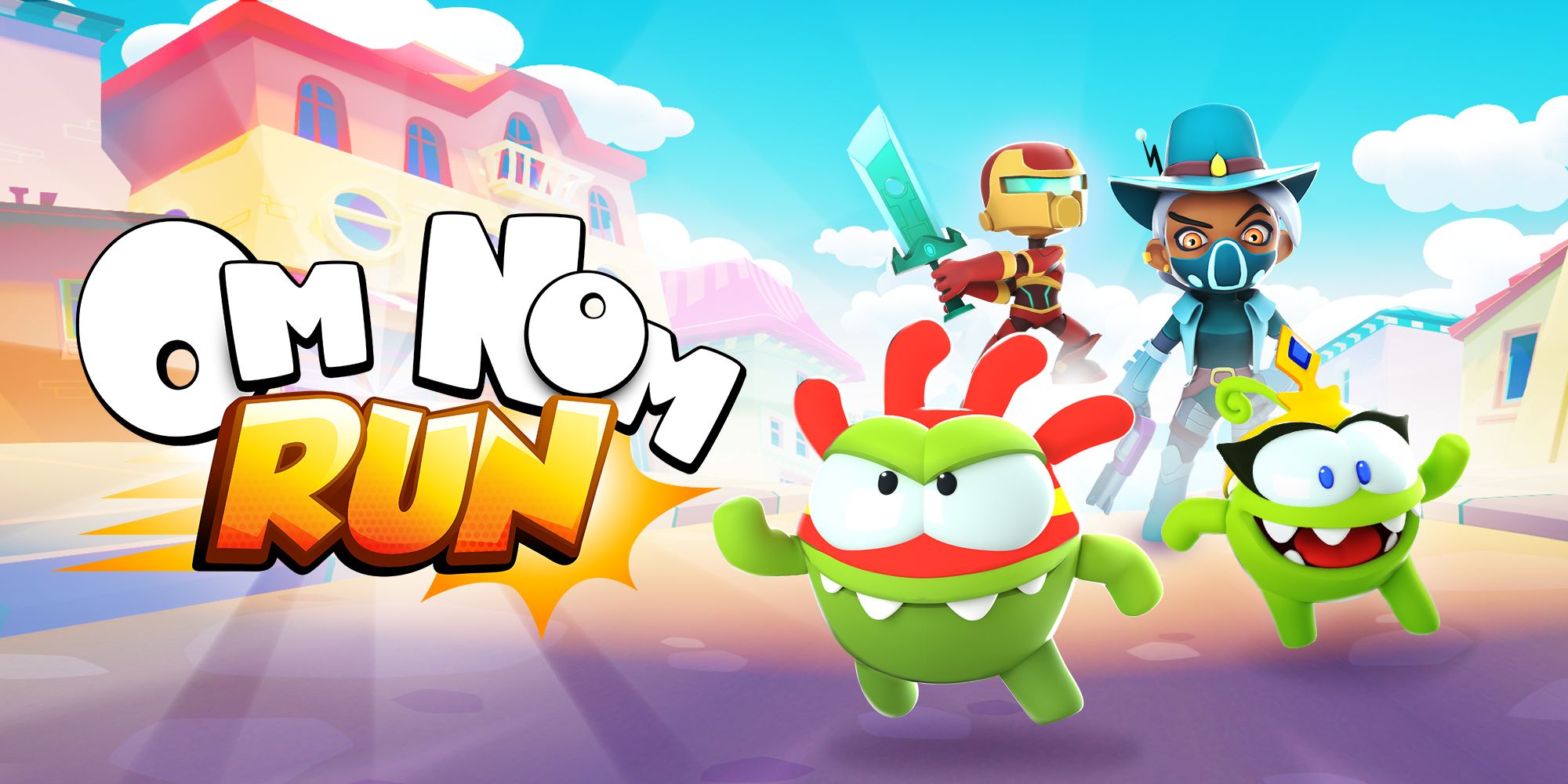
But wait!
Before we dive into the case examples below, let’s quickly learn a bit more about something essential for any PlaytestCloud user: Video Tokens. If you already know about Video Tokens, which are basically our in-house currency, just scroll down and head straight to the use cases.
What is a Video Token?
Video Tokens (VTs) are like PlaytestCloud currency. They are tokens you can use to place orders–and come as a part of our subscription plans. Then, Video Tokens are automatically added to your account every billing cycle so you can keep ordering more playtests!
How many Video Tokens would I spend on a Single-Session Playtest?
Single-session playtests are easy to price out; the only difference is which type of target audience you choose.
For 1 Single-session playtest between 5 to 60 minutes, you will spend 1 Video Token for standard targeting, 1.5 Video Tokens for advanced targeting, or 2 Video Tokens for testing with kids.
| Standard targeting | Advanced targeting | Kids testing | |
|---|---|---|---|
| 5 to 60 minutes single session playtest with an adult | 1 VT | 1.5 VT | 2 VT |
Now that that’s out of the way, let’s have a look at how Single-session playtesting has helped our clients – and how it can help you.
6 Case Studies to Motivate Your Next Single-Session Playtest
Playtesting Players’ First Interactions
When game studios want to test their game for the very first time, they often go for a Single-session playtest to gauge the first-time user experience (FTUE).
This is when game studios finally get an answer to the big question: What are the first impressions players will get from our game?
That’s just what happened with a medium-sized mobile gaming company we have been working with for years, who recently developed a hidden-object game. Looking to test their first-time user experience (FTUE), they wanted to make sure they had gotten the gaming content just right for their target players.
Let’s take a look at their playtesting approach below:
Goal: To test their hidden-object game.
Cost: At a cost of 1 VT per player for 5 players total, this studio spent a total of 5 VT.
Setup: The game studio ordered a quick and easy Single-Session playtest which consisted of 5 players with standard targeting, with a minimum play-time of 60 minutes. With no special requests (such as custom briefing, or in-game tasks), the studio allowed players to play the game naturally in a real-life environment without guides or parameters. The team placed the order at 5 PM from their NYC offices, and we were able to gather players and deliver the test within a few hours of their request.
Indeed, once players completed their 60 minute minimums (or longer, depending on desire to play the game), videos and audios were automatically uploaded to our PlaytestCloud platform, where our team of reviewers began watching videos to make sure all technology was working correctly, and that each player followed all necessary instructions set out by the developer. Upon approval of all 5 players, recordings were sent to the game studio’s developer through their PlaytestCloud account by 9 AM the next morning. From there, the game studio was free to analyze what was working (and what wasn’t) during their first hour of gameplay…all within 24 hours of their order.
Results: When taken together, the results of this Single-session playtest order showed that most game elements players encountered in that first hour were successful in keeping players engaged. Still, there were a few hiccups in game play the team decided needed addressing based on player feedback. They have since been working on those to update their development process. In the meantime, they took what they’ve learned and began working on changes, continuing to progress through the next hours of gameplay for their mobile game.
Playtesting Games Support Functions
When studios have been ‘in the game’ for some time, they will often utilize playtesting across multiple teams to ensure all areas of the business run seamlessly on behalf of players.
In fact, that’s just what happened when a large tier A company we work with - who have many different games within their conglomerate - wanted to know whether the help articles written and maintained by their Customer Success team were helping players solve in-game issues.
Because of their experience in the playtesting arena, this game studio already knew how to perfectly use cross functional collaboration in their games user research process to get the full benefit of using their PlaytestCloud account, as well as how to use their Video Tokens to their fullest potential. In other words, they shared their PlaytestCloud account beyond just the games user research game development team – including with their Customer Success team.
Let’s take a look at their playtesting approach below:
Goal: For the studio’s Customer Success team to independently playtest whether articles in their Help Center were effective and useful to players.
Cost: With the standard targeting option, this game studio spent 1 VT per player for a total of 3 VT.
Setup: This playtest order involved a standard targeting request for 3 players who would play for a minimum of 5 minutes each. That means, when they placed their order for a Single-Session playtest, they chose the ‘pick random players’ option from the ‘specify your target audience’ tab in our playtest order form. However, this team did not upload a game build, as they wanted to measure the success of their Help Center articles. Instead, they selected ‘HTML’ in the order form and pasted a link to the Help Center on their website. They also uploaded a custom briefing intended for players, which said something along the lines of: Hello, you are a player of Game X, and you are having the following issues (issues listed). Please show us how you would troubleshoot this issue using our Help Center. From there, the customer success team independently reviewed recorded material to figure out how players were presently diagnosing certain game issues to find the right answers for their issue online.
Results: Because the Customer Success team has a lot of experience running this quick and easy playtest – with minimal VT investment – they were able to get quick, consistent results from players who were not only happy with the gameplay, but also satisfied with the behind-the-scenes customer support available for that game. This made it easier to move forward with further help articles noting their continued success.
Playtesting During Early Game Development
When game studios want to make great use of their budget, they invest in early-stage playtests to get player feedback before investing more money in certain concepts or ideas. In this case - although concept testing and surveys are a great option - Single-Session playtests are most popular for early prototype testing since you don’t need a lot of content to make a test successful.
In fact, when one of the independent mobile gaming companies we work with wanted to test a prototype of their game that had been designed on Figma, we made it possible for players to interact with (and provide feedback on) these early designs.
Let’s take a look at their playtesting approach below:
Goal: Have players playtest a Figma prototype version of an independently-created mobile game, and collect player feedback and impressions to gauge likeability of the game.
Cost: Opting for standard targeting for 1 VT per player, this studio spent a total of 3 VT.
Setup: For optimal results, this studio invested in a 3-player Single-session playtest, with each to play for 10 minutes total. The Figma prototype they created was then provided to see whether their future plans for the game matched the desires of their target audience. They uploaded it under the ‘HTML’ prototype tab on the order form, and later the 3 selected players were given the opportunity to ‘click-through’ the prototype to give their thoughts and feedback.
Results Post-playtest, this independent game studio felt happy with the feedback they received from the 3 players in their target audience. From there, they decided their prototype was in a good state to move forward into development and further design. In short, this game studio was able to move ahead and invest in this game direction more confidently with the help of a quick and easy Single-Session playtest.
Party Playtesting for Mobile Games Motivation
When game studios have been creating a game for a long time, it can be useful to infuse a little good spirit and motivation into the team to show them what they’re working toward.
In fact, when one of the large, Tier A mobile gaming companies we work with - who specialize in player vs. player games - wanted to place a multi-player, Single-session playtest with us, it wasn’t to test the workability of the game–it was to help reward the development team with positive player feedback after completing a grueling sprint during their last game update.
Let’s take a look at their playtesting approach below:
Goal: Get player feedback on the latest game update, while letting the developers test the game to provide positive motivation and rewards.
Cost: At a cost of 1.5 Video Tokens per player for the advanced targeting option, this game studio spent 9 VT total for this playtest.
Setup: This studio opted to include a total of 6 players in their multiplayer single-session playtesting order who are actively playing the game studio’s tested game. However, they also contacted PlaytestCloud to request a rather unique way to spend their Video Tokens: by sending their own developers the invitation link to their playtest. The idea was to create a ‘reward party’ environment to celebrate the completion of an in-game update of an unreleased game in collaboration with the development and user research teams.
While the real players we provided played the game at a pre-set time, the developers were simultaneously in their office enjoying an after-hours party with their personal mobile devices in hand. To increase the sense of fun and friendly competition, the players began their playtest on 1 team, while the mobile game developers were put on their own ‘team’ to duke it out with the selected players for 60 minutes total. Not only was this considered a unique and creative way to use a Single-Session playtest to boost morale and games development (through thick and thin), it also helped game studio leaders get their teams more excited about games user research in general!
Results: Post-playtest, the spirits on the development team were sky-high. While enjoying a small party with their inner community of colleagues, they were able to engage with their own game more as players and less as professionals. Plus, it allowed these game gurus to explore the game from a player’s mindset, against real players of their game. With new insights on what works and what doesn’t, and new motivation from the developers to improve their game even more, this playtesting session was the talk of the office for weeks, and produced incredible results moving forward for engagement with this game.
Multiplayer Live Playtesting Session
When game studios decide to include in-game events in their gaming stream, they often desire playtests that allow inter-player communication and a multiplayer gaming environment.
In fact, when one of the multinational mobile gaming companies we work with wanted to test an in-game event in a multiplayer format, they ordered a targeted multiplayer single-session playtest to get a bunch of players in the same ‘room’ for playtesting.
Let’s take a look at their playtesting approach below:
Goal: Test an in-game event style with multiple players at the same time to see if the event would work in a real-game, multiplayer environment.
Cost: At a cost of 1.5 Video Tokens per player for advanced targeting, this game studio spent a total of 66 VTs for this playtest order.
Setup: With the advanced targeting option, this single-session order involved 44 players who were actively playing the studio’s released game content. Player selection was defined as:
(1) 22 men between the ages of 16 and 21 with no target audience requirements
(2) 22 women between the ages of 16 and 21 with no target audience requirements.
Then, once players were found, they began the playtest by downloading the app from the App Store at a pre-specified date and time. Using a secret password using in-game tasks, they explored ‘hidden’ levels of the game during the special event time slot assigned.
Results: Because players were allowed to play the game (including secret levels) during a live event at a specific time, game developers were able to create a natural gameplay scenario to see whether the event would be successful on a larger scale. By the end of the playtest – with playtest recordings in hand – the team analyzed their results to find that the event was successful. These findings motivated further investment in making this event type live for the general public, with players getting full access to this event only a few weeks later.
Usability Playtesting Session
When game studios have a game polished and published in the App Store, they often want to secure (and retain) player engagement by doing more research into player churn.
In fact, when one of the large-sized mobile gaming companies we work with wanted to determine what level of lag would be acceptable to players, they ordered a single-session playtest to check out game usability issues for more than one game architecture.
Let’s take a look at their approach below:
Goal: To deploy existing user research expertise and determine acceptable lag amounts (plus test other usability issues) for the gaming build, all to prevent player churn in this and future games.
Cost: Opting for standard targeting, this game studio spent 1 Video Token per player for a total of 60 VT.
Setup: This playtest order came in with a request for 60 players from any background or demographic to play for a minimum of 5 minutes each. Approaching a basic Q/A test, this playtest saw players move a character from the game forward while experiencing varying levels of game lag. Each time a player would finish a short level, the ‘lag intensity’ would increase. The test thus measured how long players would withstand the lag issues before dropping off. Although artificially-induced, this playtest style allowed the studio to test a deeply specific component of their game that could affect a variety of in-house games in the future.
Results: Once all results of the playtest were gathered, the game studio determined when most players became frustrated with gameplay due to lag–even determining how many frames per second of lag a player could withstand before leaving the game. This knowledge gave the studio a baseline to use when developing their games so they know how to keep players happy. It also gave the studio a great measure for testing the happiness of players who play their game.
Test Your Next Mobile Game Concept with PlaytestCloud
As you can see, Single-Session playtests can be used in a wide range of setups, and solve an equally wide range of problems. No matter the type of game you’re working on, or the players you’re hoping to reach, this type of playtest is essential to test the FTUE of your game, no matter your stage of game development.
So, if you already have an account with PlaytestCloud, then when you’re ready to order a Single-session Playtest you can choose “Single-session Playtest” from the New Playtest page on your account dashboard.
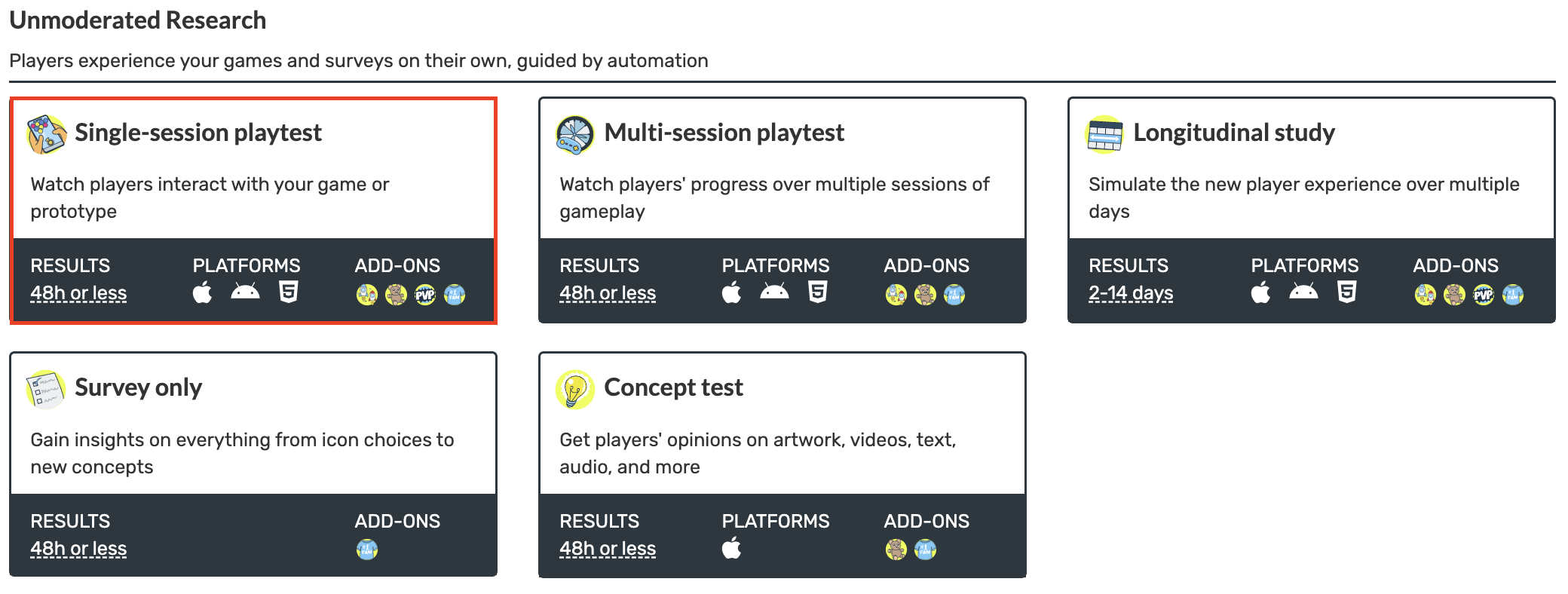
If on the other hand you are new to PlaytestCloud (and maybe even new to creating and testing mobile games), then you can create an account with us by filling out the form below, and we will help you with your first playtest!
We are so excited to take care of all your playtesting needs, and look forward to hearing all about your next game-building adventure.
Multi-Session Playtests
Longitudinal Playtests
User Research Services
Player Interviews
Concept Testing
Surveys



